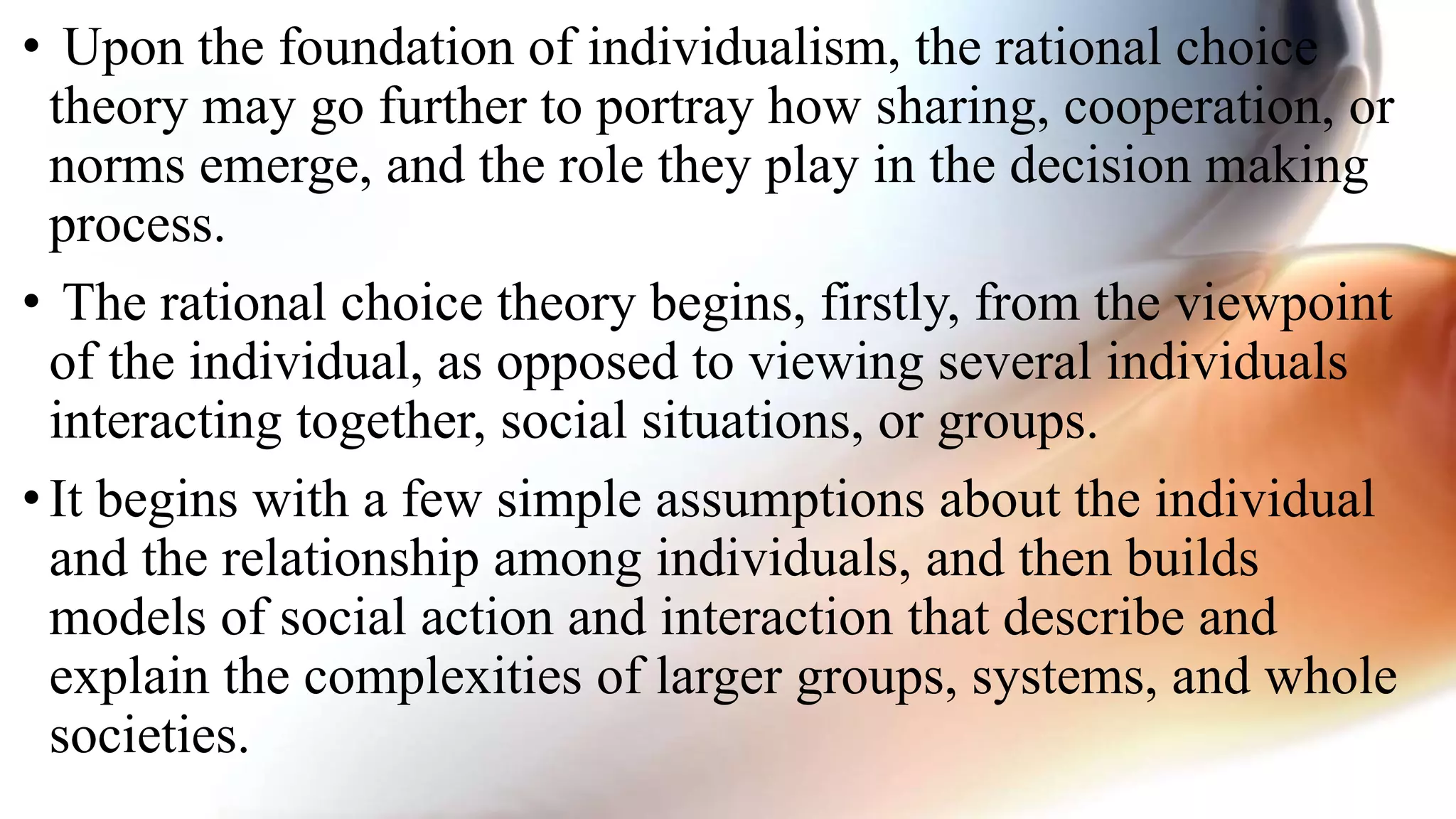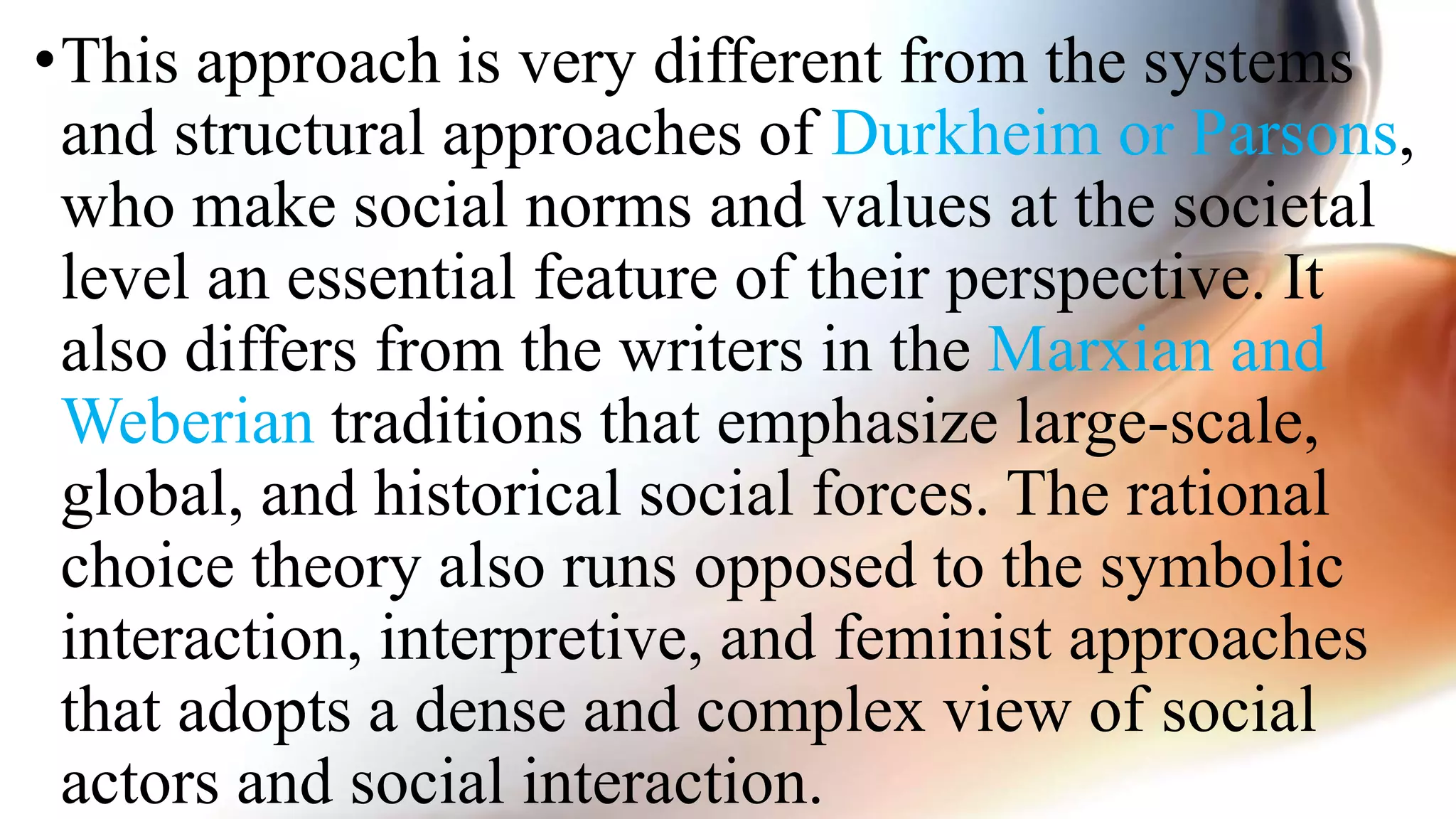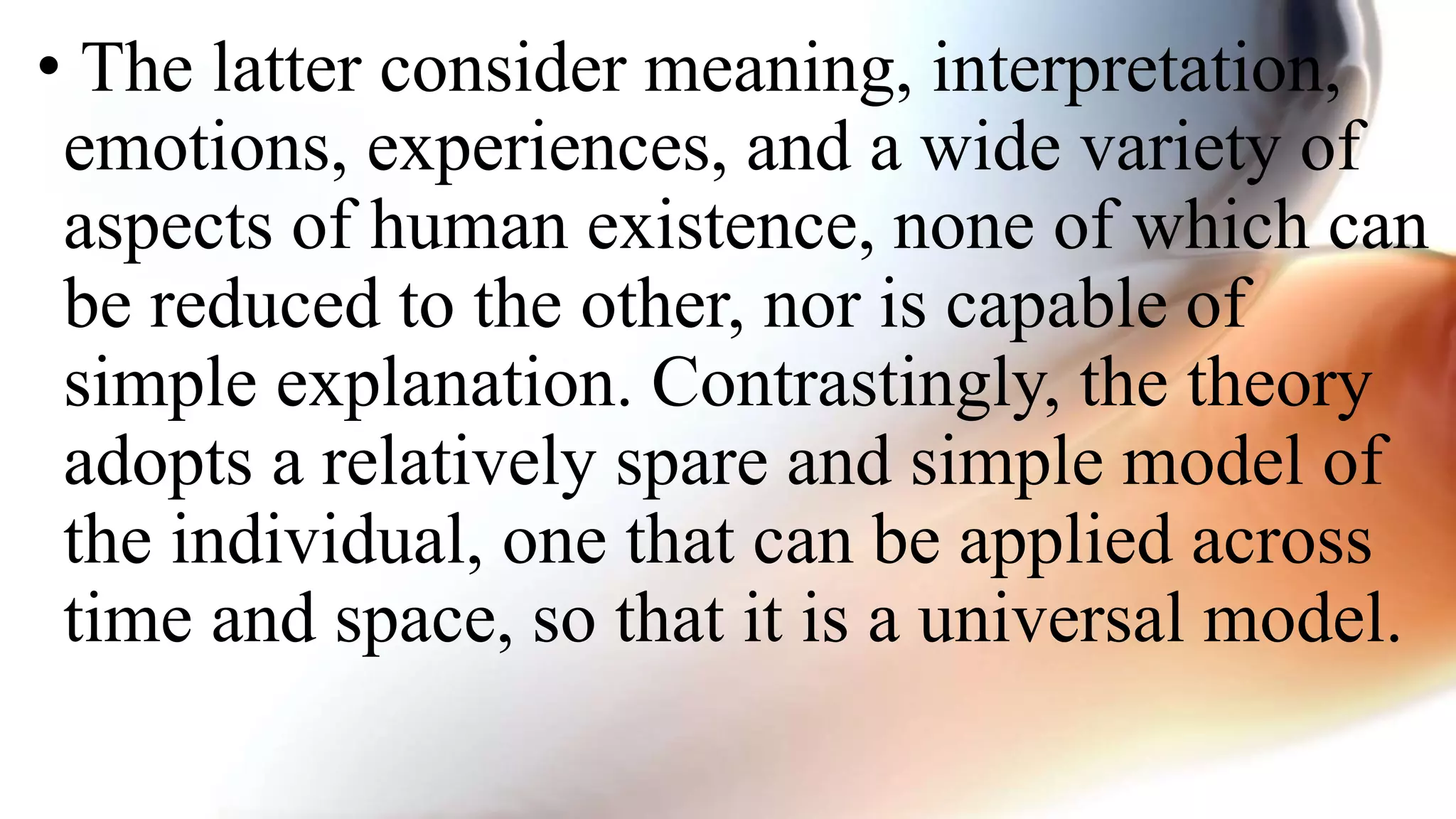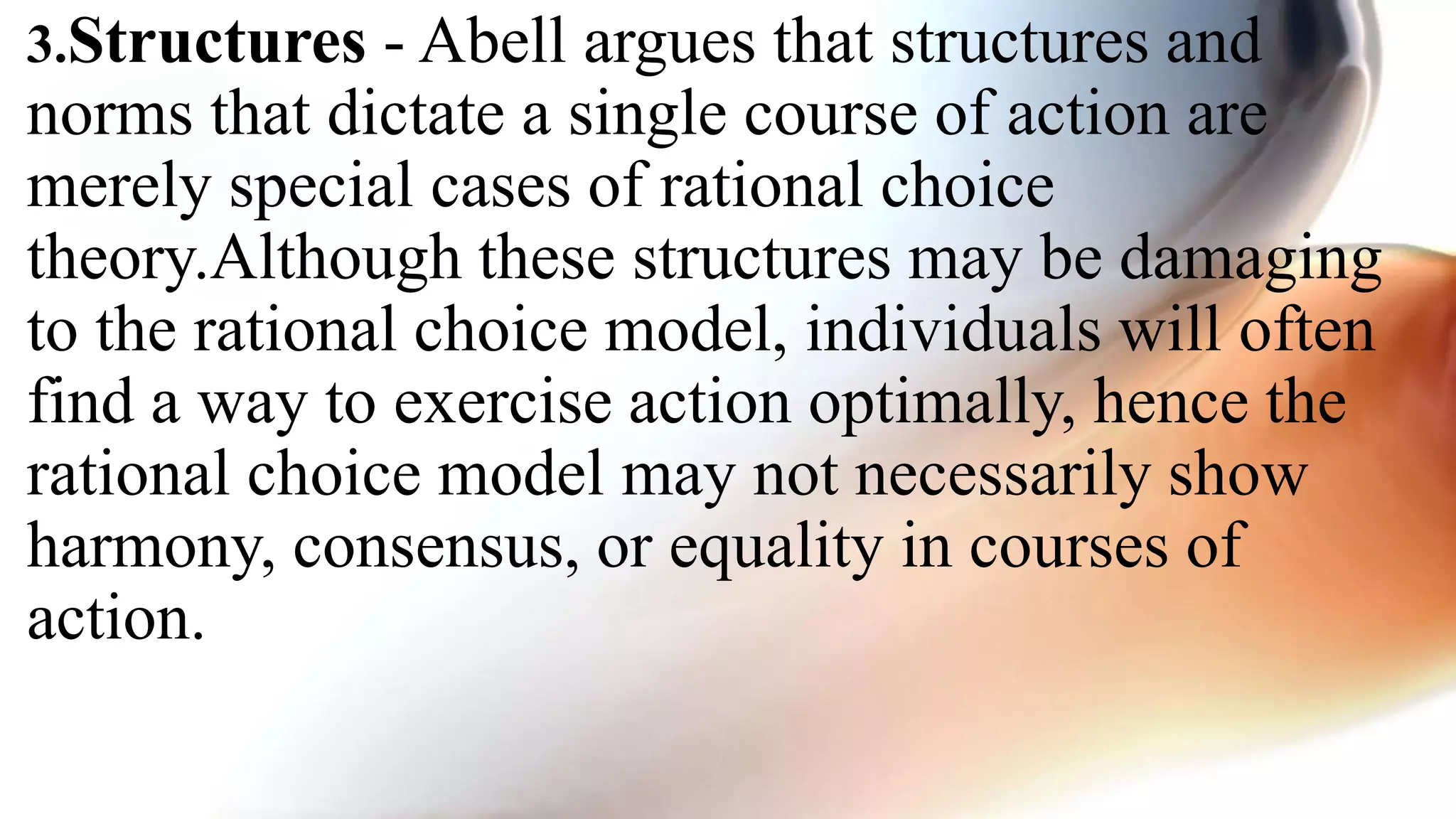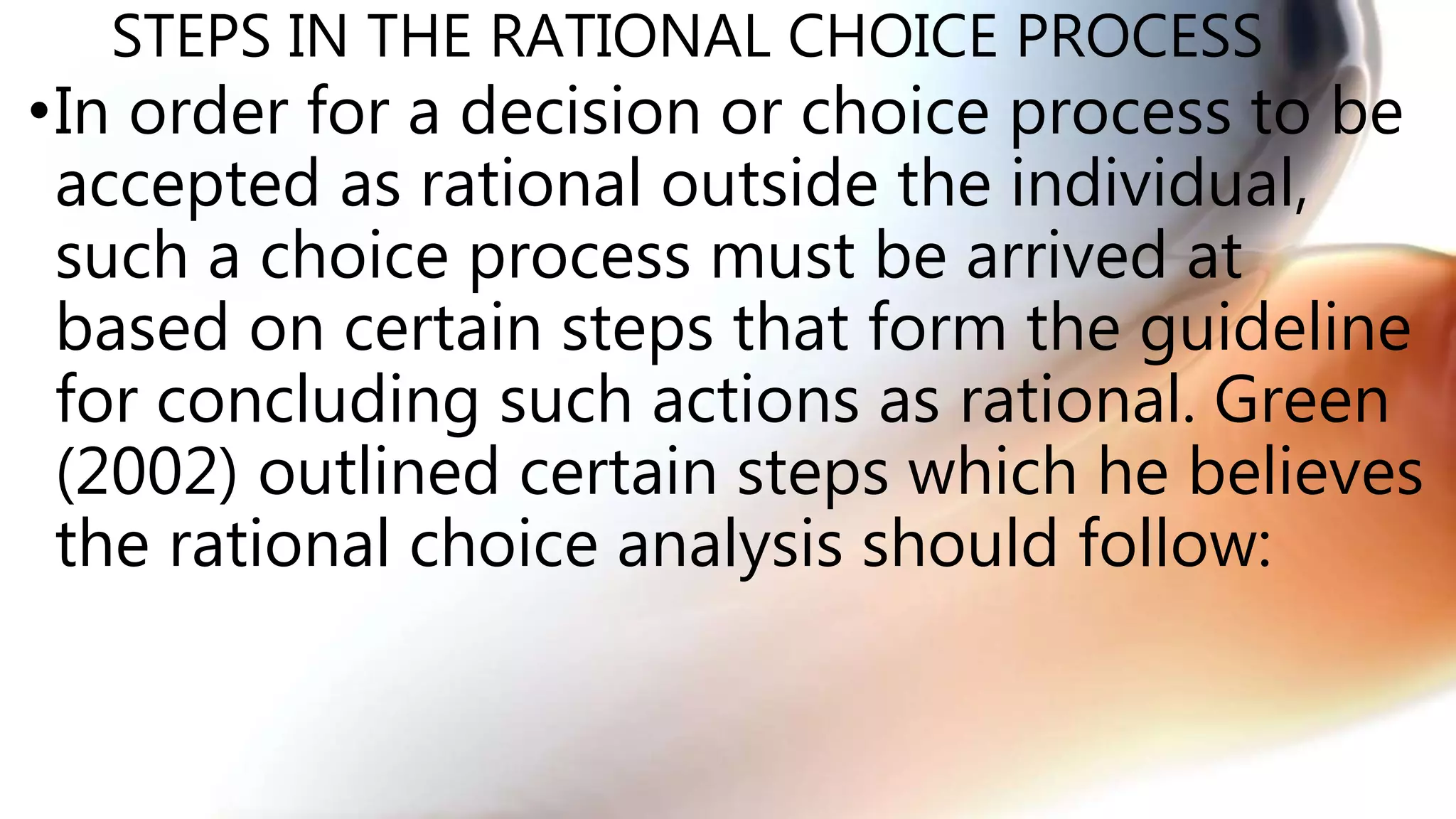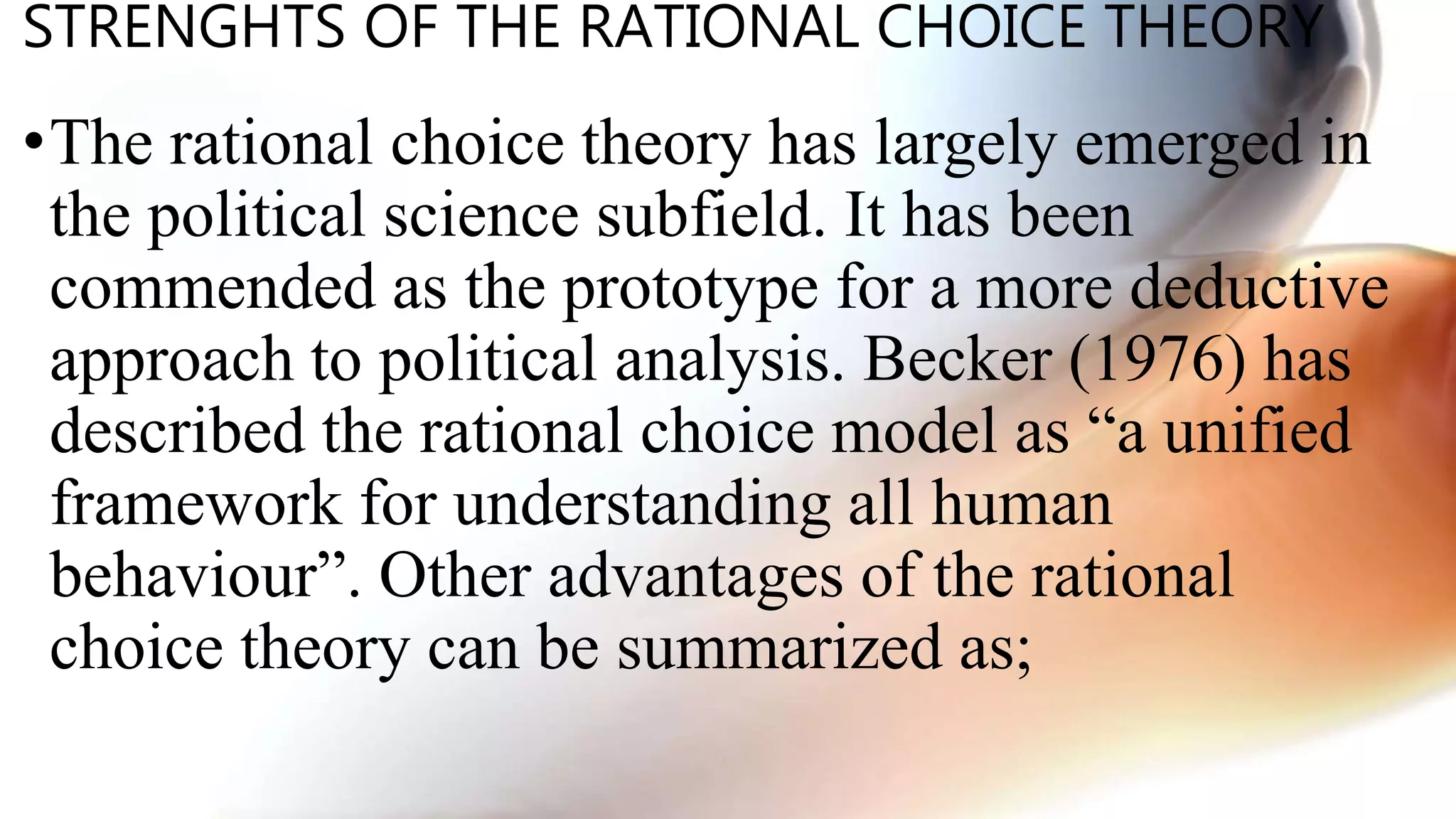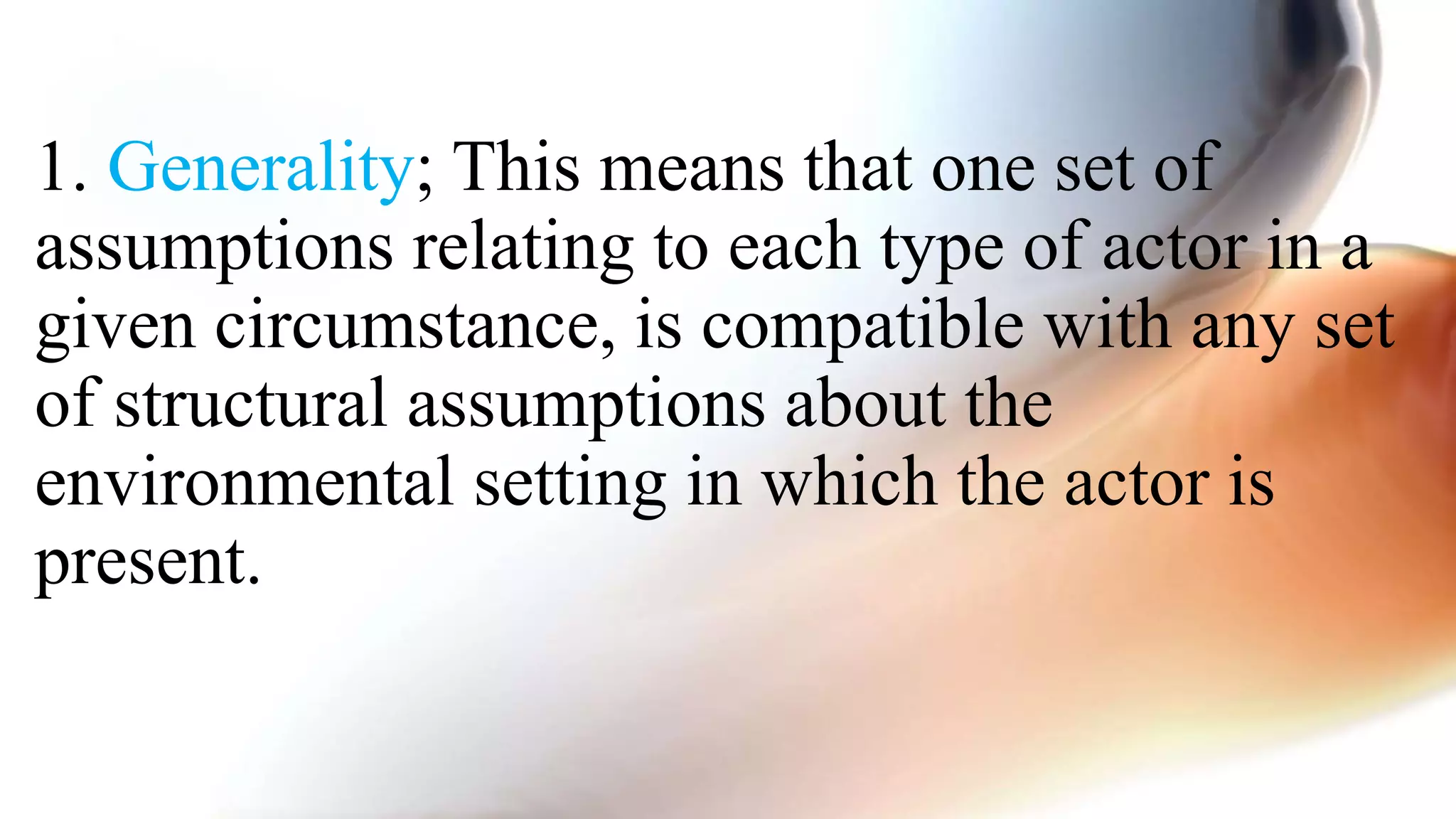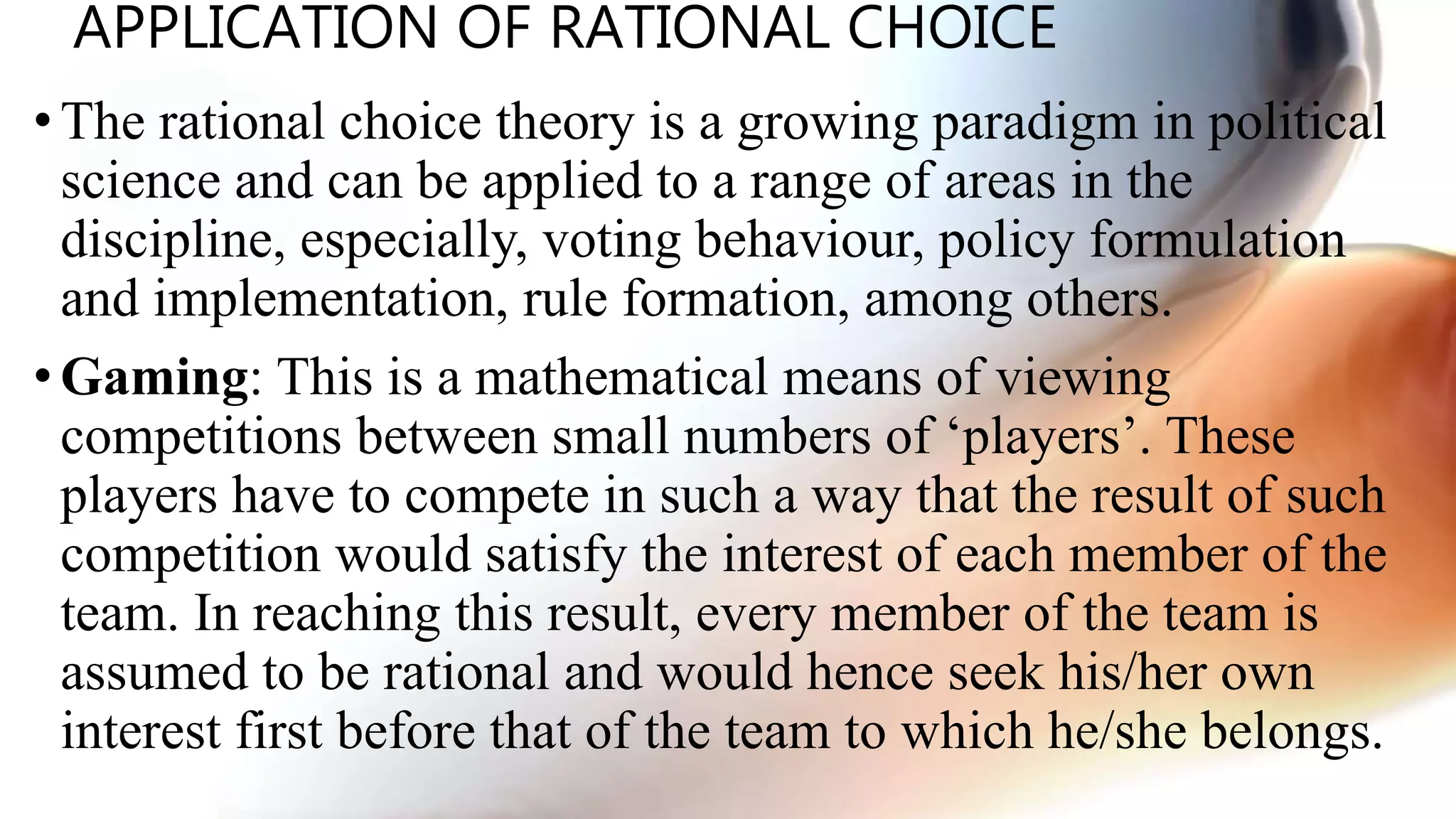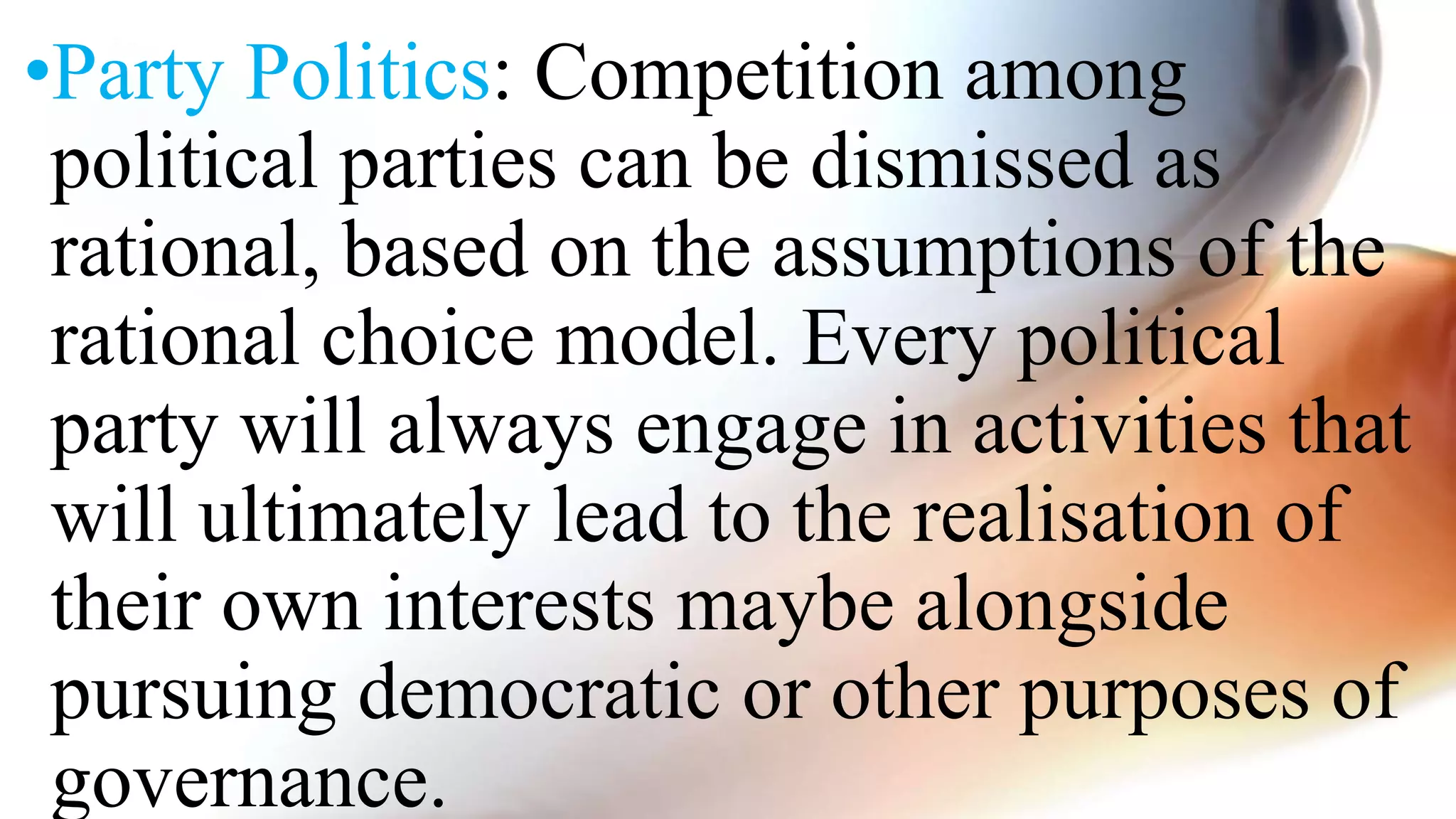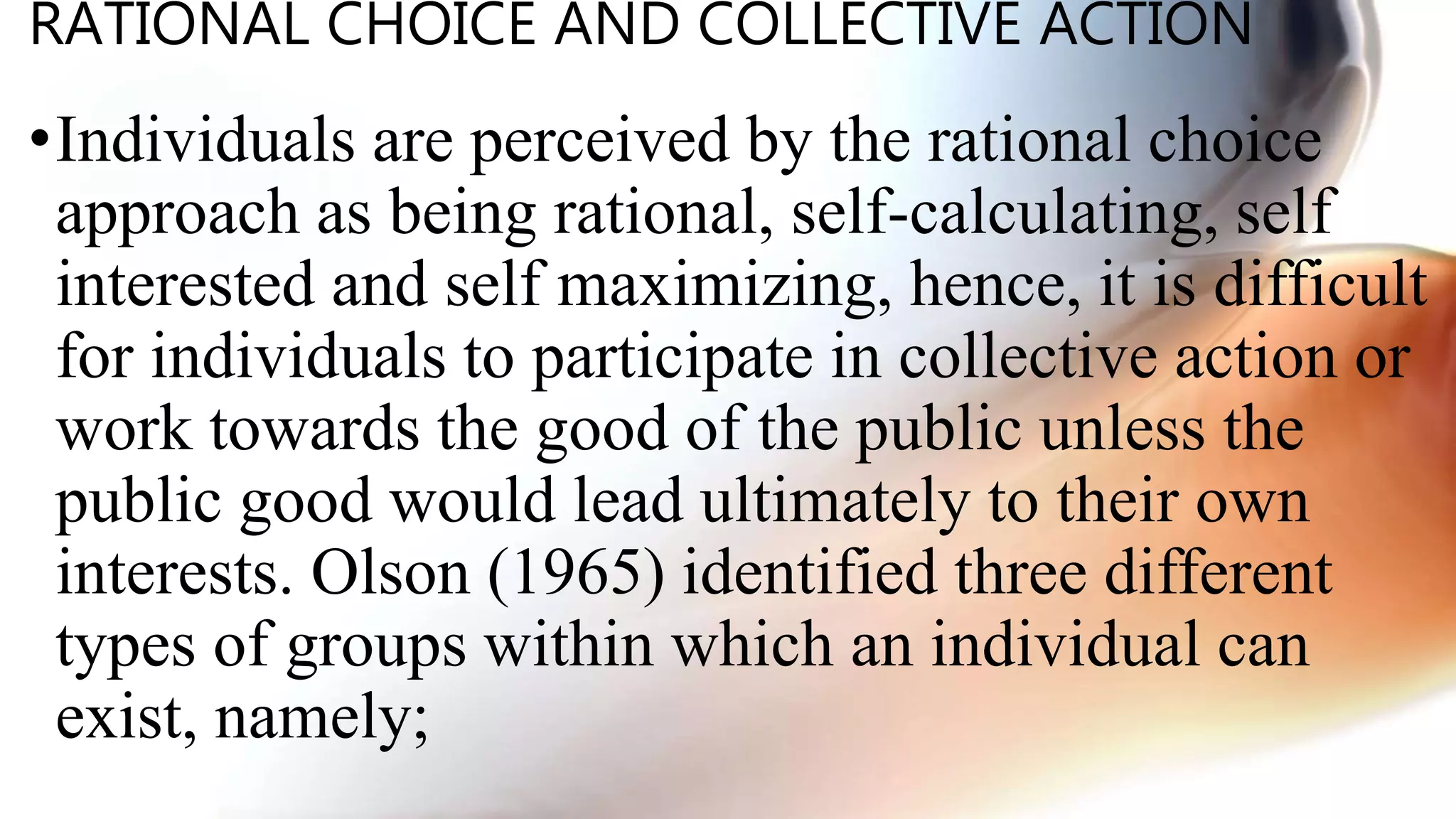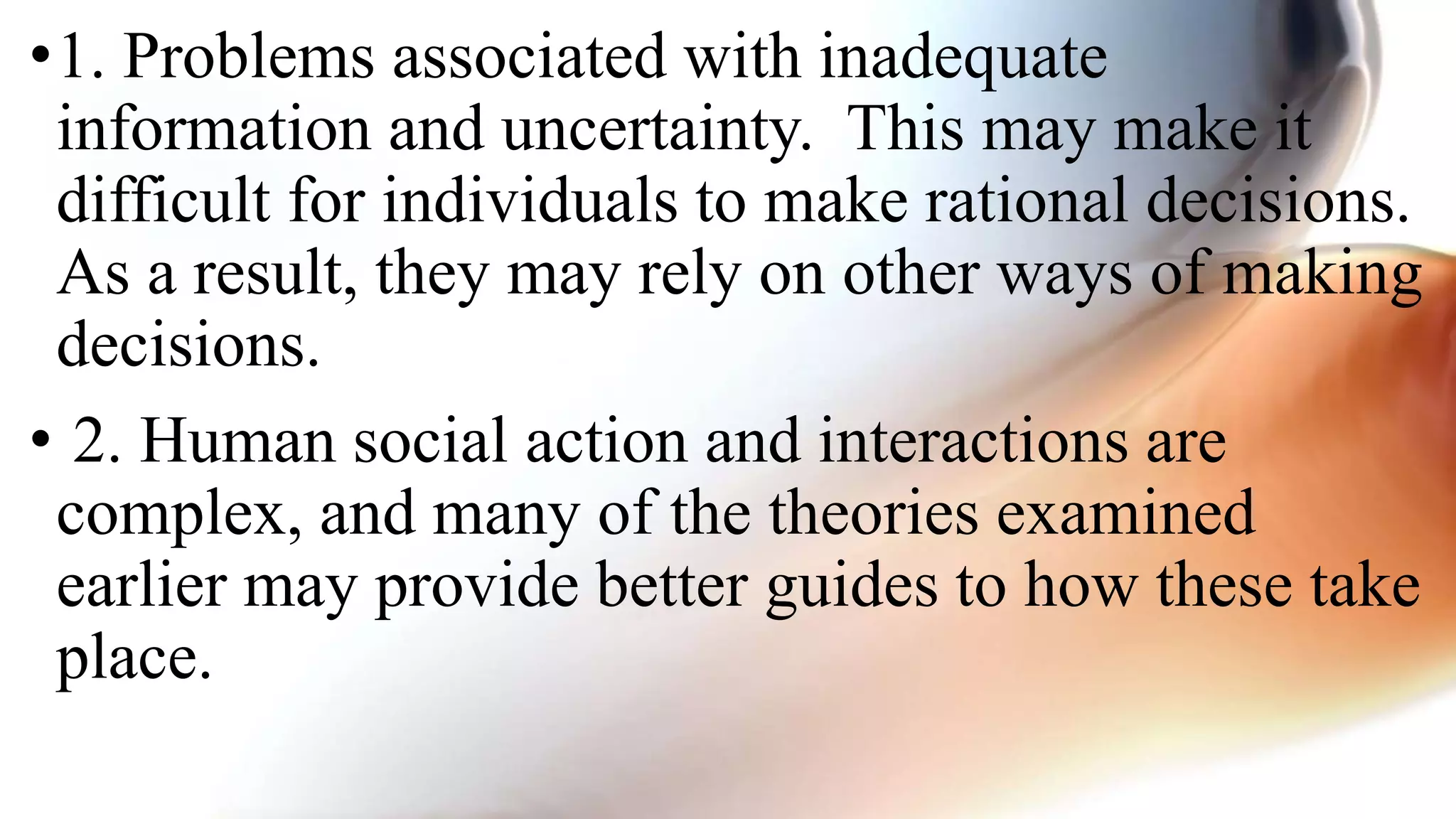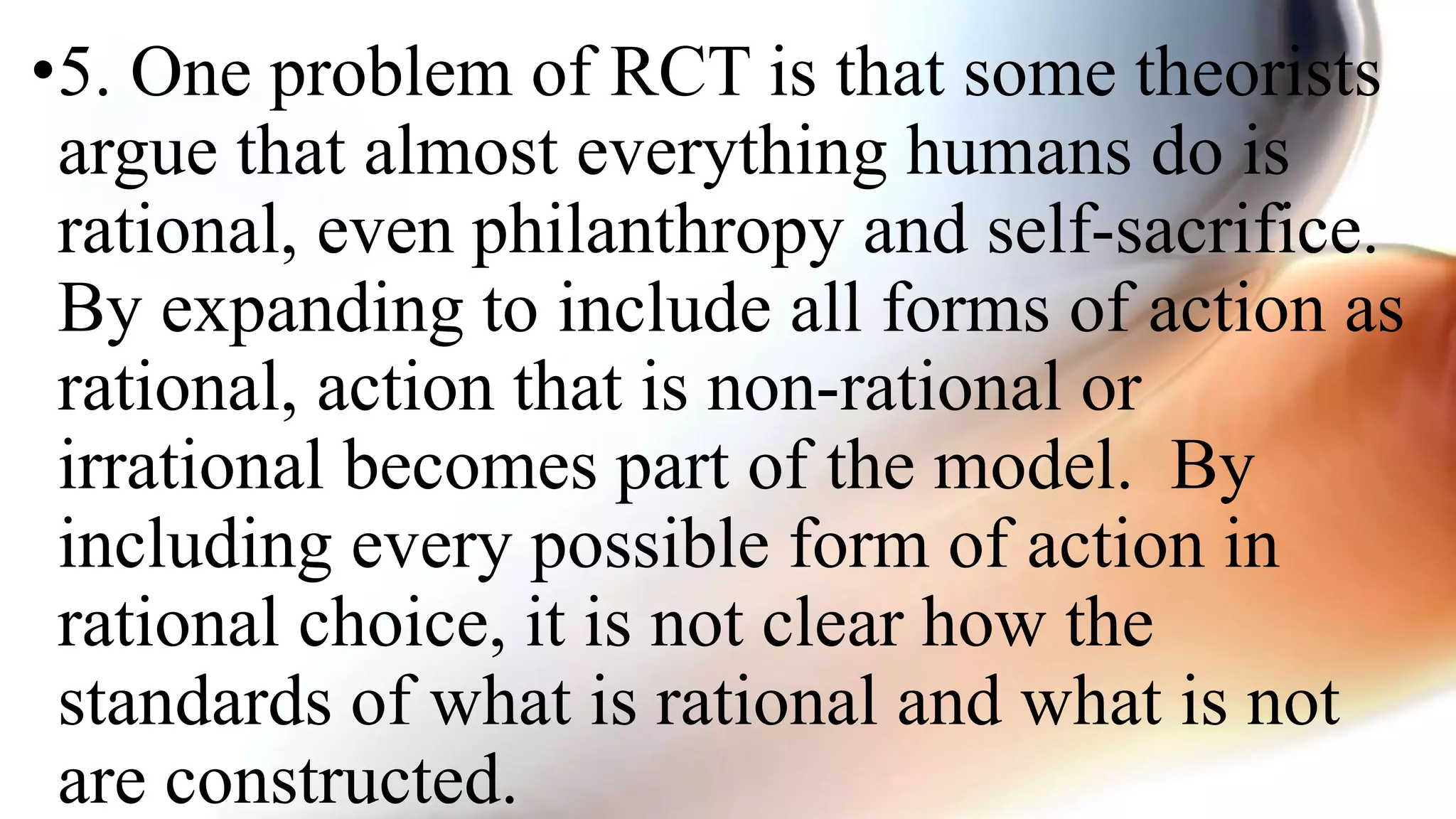The document provides an overview of Rational Choice Theory (RCT), its growth, assumptions, processes, strengths, applications, and criticisms. RCT is a framework for understanding human behavior in social sciences, positing that individuals act rationally to maximize their self-interest based on individual preferences and constraints. The theory has applications in various fields, including political science, and has faced critiques regarding information adequacy, complexity of human behavior, and its inclusiveness of non-rational actions.







